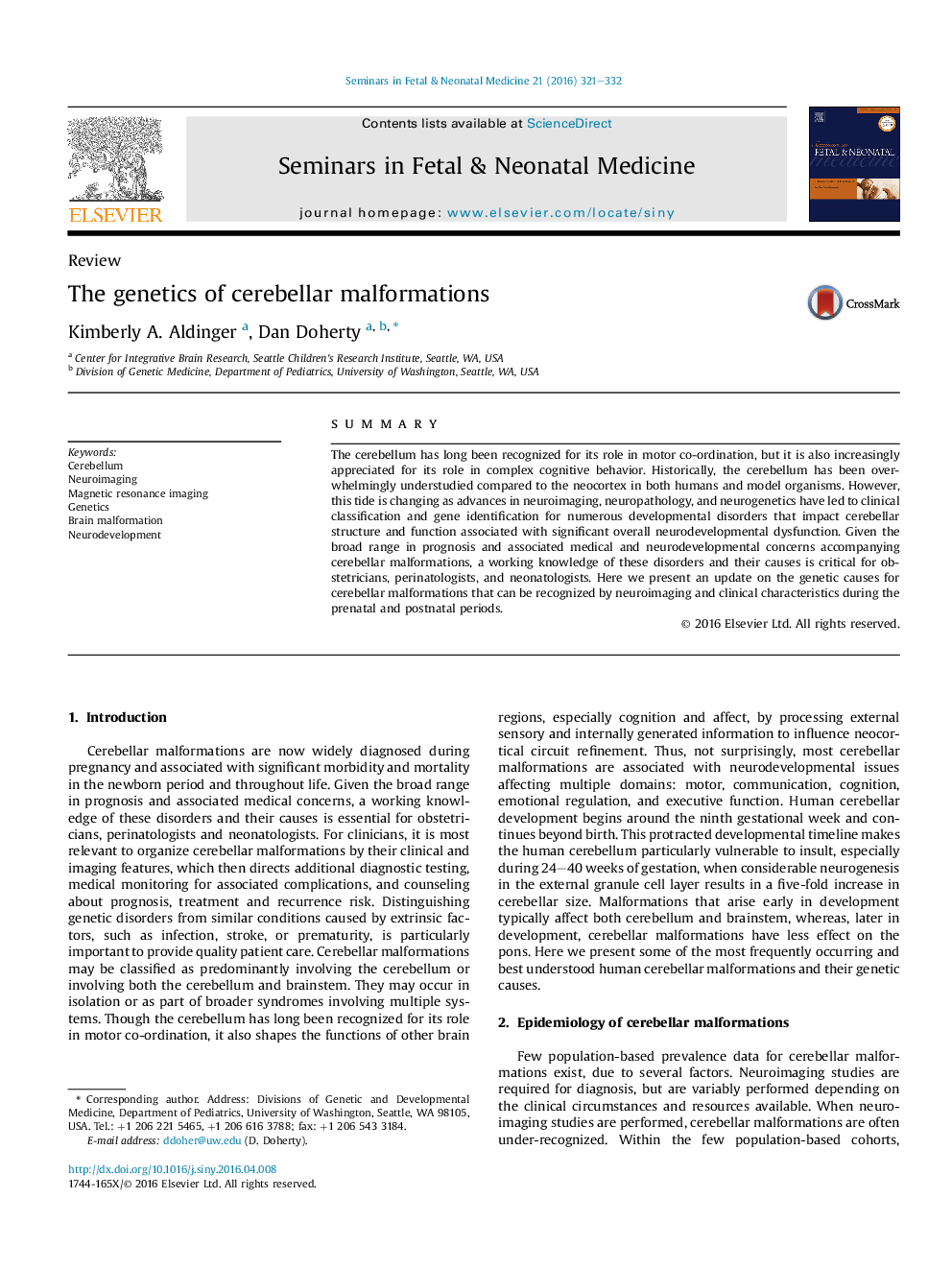| Article ID | Journal | Published Year | Pages | File Type |
|---|---|---|---|---|
| 3973926 | Seminars in Fetal and Neonatal Medicine | 2016 | 12 Pages |
SummaryThe cerebellum has long been recognized for its role in motor co-ordination, but it is also increasingly appreciated for its role in complex cognitive behavior. Historically, the cerebellum has been overwhelmingly understudied compared to the neocortex in both humans and model organisms. However, this tide is changing as advances in neuroimaging, neuropathology, and neurogenetics have led to clinical classification and gene identification for numerous developmental disorders that impact cerebellar structure and function associated with significant overall neurodevelopmental dysfunction. Given the broad range in prognosis and associated medical and neurodevelopmental concerns accompanying cerebellar malformations, a working knowledge of these disorders and their causes is critical for obstetricians, perinatologists, and neonatologists. Here we present an update on the genetic causes for cerebellar malformations that can be recognized by neuroimaging and clinical characteristics during the prenatal and postnatal periods.
